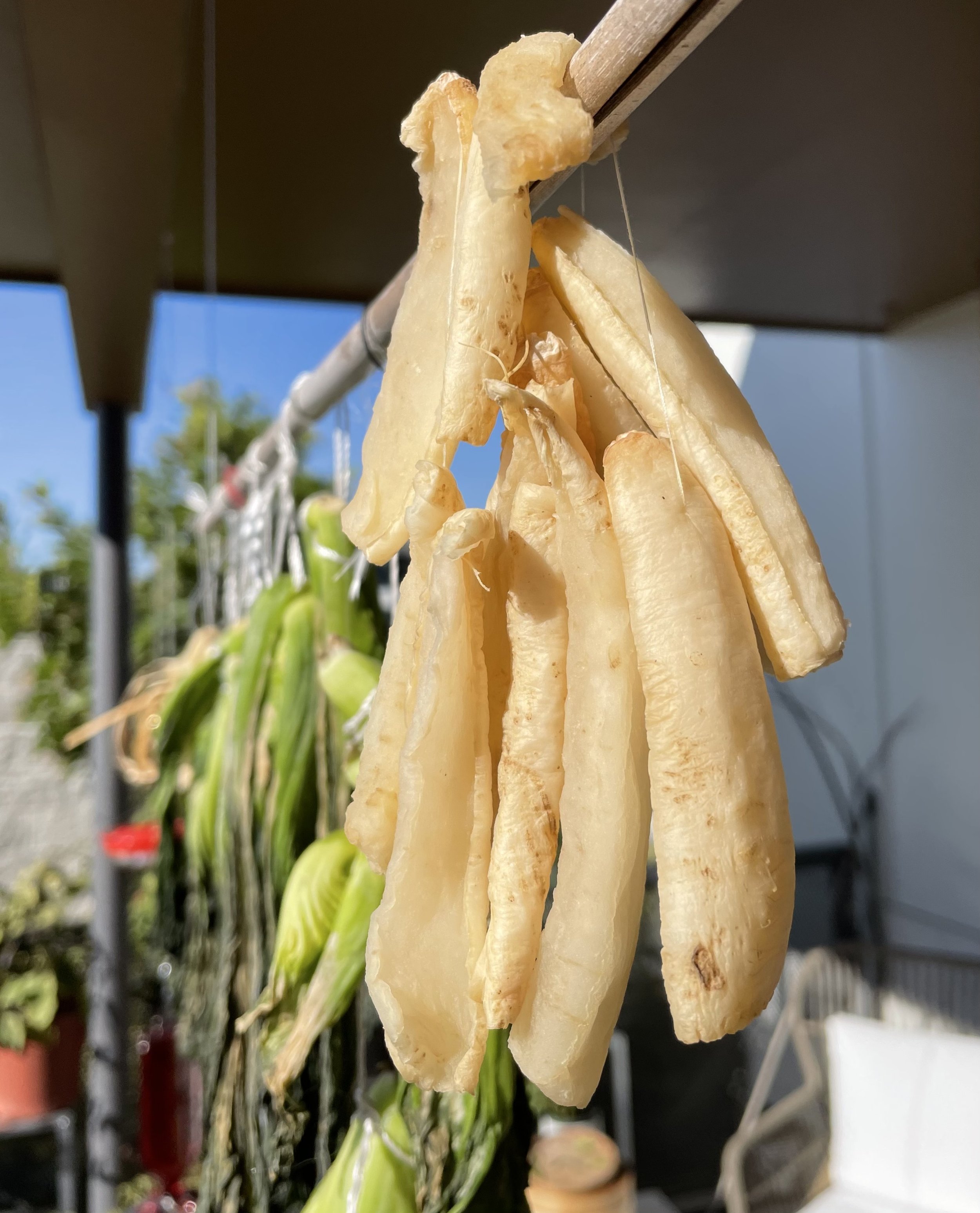Preserving Food to Preserve Life
Preserving Food to Preserve Life
Historians believe that food preservation was vital to survival in ancient times. Yet, nowadays, interests have shifted from preserving foods “because we have to,” to “preserving food because we like to.”
Yes, preserving is absolutely necessary if we want to enjoy good food.
Borrowing from the language of microbiologists to illustrate the chemical reaction that takes place in food by just adding salt — and through a period of time — the protein in food is broken down into amino acids by microorganisms and enzymes. At the same time, the fat decomposes into small molecules of volatile aromatic substances, which enrich the taste of the food. That’s how we get the ham that we enjoy at Christmas.
I often crave food that I had while living in Asia, such as fantuan, minced salted turnip and pork floss wrapped in steamed sticky rice, fried rice with salted fish, or meicai kourou, pork belly steamed with dried mustard leaves, a popular dish served by many Hakka families.
The craving for such foods is heightened as we await the arrival of the Year of Tiger, which falls this year on February 1, 2022. Chinese lunar New Year, which is just around the corner, prompted me to get a head start on making my own salted turnips, salted fish, preserved mustard leaves and cured pork belly. When I was a little girl, my mother always preserved these items, but this year was the first time I did this myself. These things are good to have in the kitchen larder at any time, but it’s also helpful to have them for the New Year, when your favorite and special dishes are made for the occasion.
What’s astonishing is that the oldest method of food preservation is actually quite simple and straightforward. All that’s needed to improve the taste and flavor of your food is simply plenty of sunshine and the time needed to complete the dehydration.
Salt, sunshine and time are the three main ingredients to preserving food. The following items are now still hanging on a bamboo pole in my patio:
Fish (xianyu 鹹魚):
Rub the fish with salt and marinate overnight. Rinse off in cold water the next day, pat to dry, and hang to dry in a shady but airy place. The longer you dry, the better the taste.
Pork belly (larou 臘肉):
Rub the meat with salt and hang it for a few hours in an airy area. Mix soy sauce, Shaoxing wine and sugar to marinate the pork belly overnight and then hang to air-dry for 12 hours. Then return the pork belly to the soy sauce mixture and marinate overnight again. Repeat several times until you use up the marinate. Continue to air-dry until your pork belly feels oily. Store in the refrigerator.
Mustard leaves (meigancai 梅乾菜):
Sun-dry mustard leaves for just one day and then roll the vegetables back and forth in salt. Let the leaves sit for a few hours as the salt does the job of extracting the water. Then squeeze out the water and hang the leaves in a sunny and airy spot until they turn a dark amber brownish color. Approximately seven to 10 days.
Sun-drying mustard leaves in my patio garden
Sun-dried mustard leaves after 6 days
Persimmons:
Sun-drying persimmon is known as hoshigaki in Japan, where it is quite a popular treat. I read about this recently in a newspaper article. All you need to do is peel the skin and hang it up in a sunny and airy spot for three weeks.
Dried turnip (luobo gan 蘿蔔乾):
Slice the turnip into thick strips, and then sun dry for two days until the strips wilt. Then do the same as with the mustard leaves. This process takes five to seven days.
Sun-drying turnips and mustard leaves
Sun-dried turnips after 5 days
Notes:
Ginger and scallion are added to marinate fish to rid it of a fishy smell. You can also brush the fish with rice wine or rose-scented rice wine, known as meigui lu (玫瑰露), after rinsing off the salt.
Sichuan peppercorn, known in Chinese as huajiao (花椒), can be added to the pork belly marinade, which consists of soy sauce, Shaoxing wine, and sugar.
Using salt to preserve food is the earliest method for removing moisture and stopping the growth of bacteria. Other methods include pickling using vinegar or another acid; sugar or honey as is used in jam making; fermentation, which uses the culture to keep microorganisms alive to do the job.
It’s so good to be able to preserve food in this simple way, and it’s also economic. Don’t be afraid to try. Failure sometimes is the best teacher, and always provides us with new insights.





